Opole 2024-10-01
Opole Groszowice Railway Station.
Geographic coordinates: 50.636N 17.955E. Elevation 163 m (534.787 ft). Address: 45-601 Opole ulica Księdza Jerzego Popiełuszki 51.
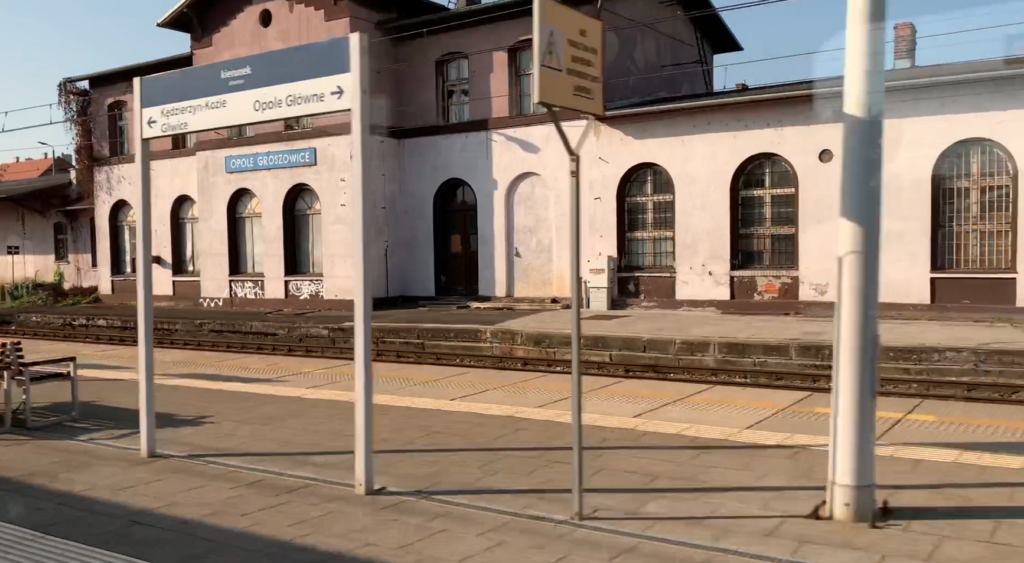
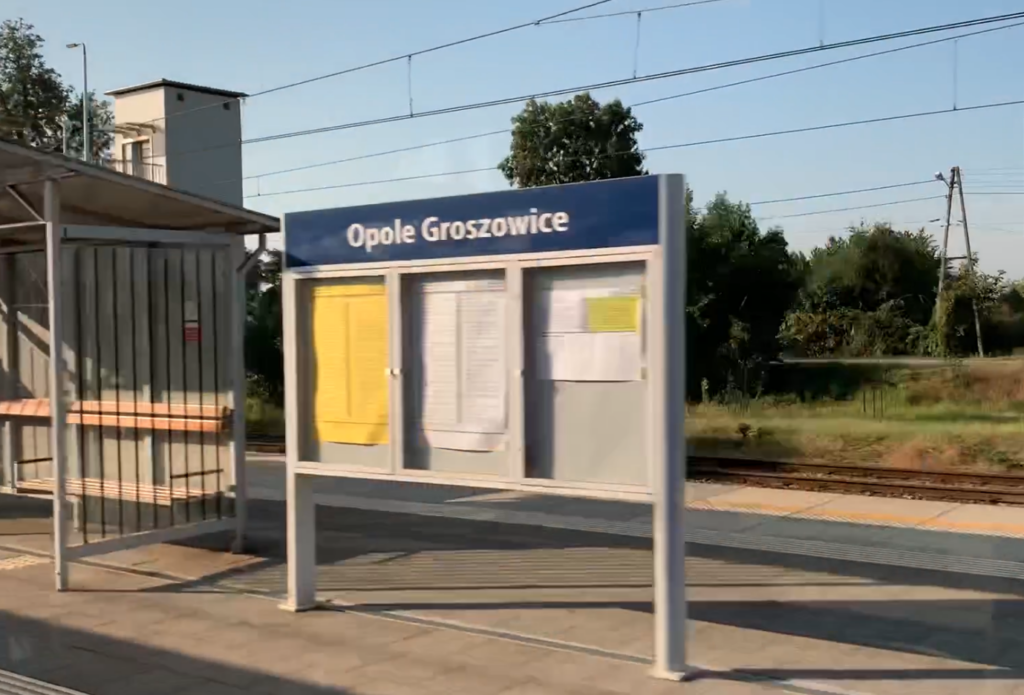
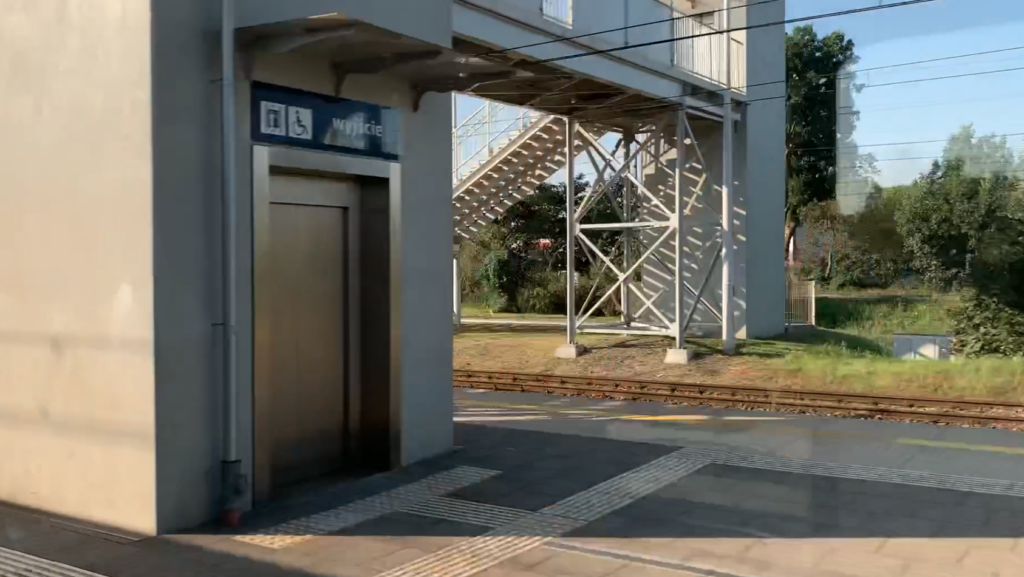
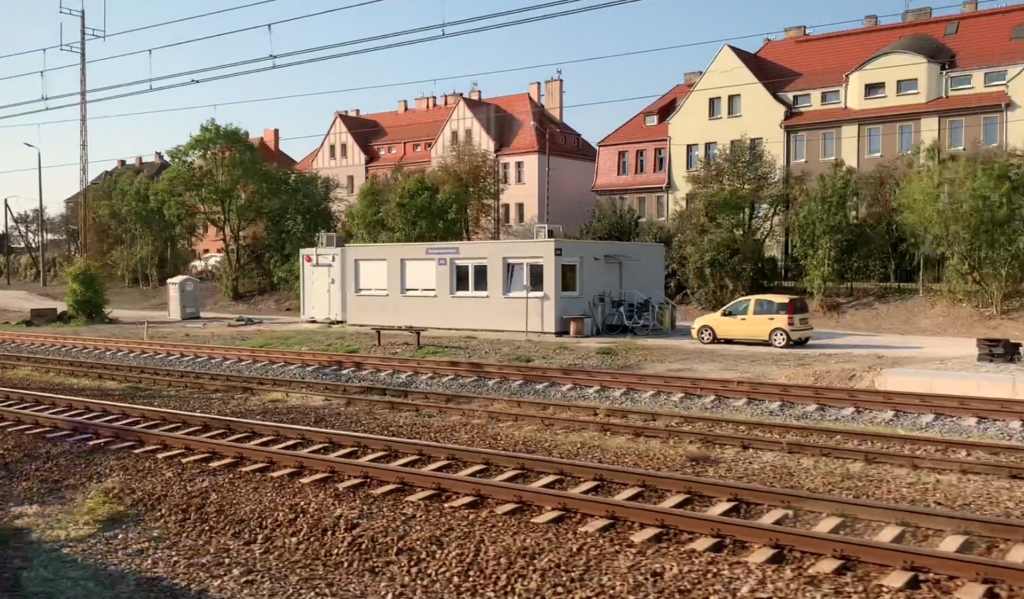
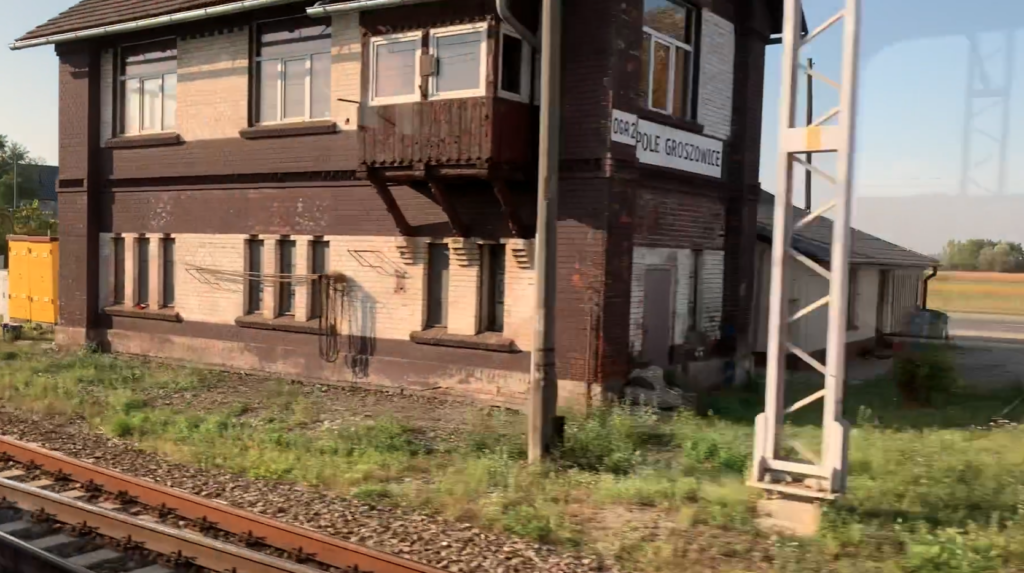
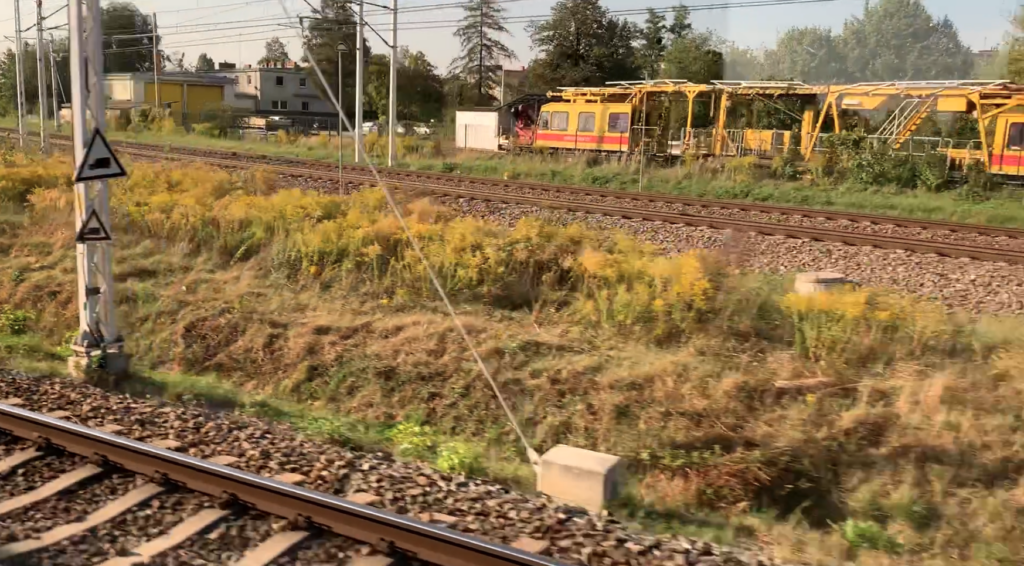
The city of Opole.
Opole is a city located in southwestern Poland, the capital of the Opole Voivodeship. It is one of the oldest cities in the country, with a long and rich history dating back to the Middle Ages. The name of the city of Opole comes from “opole”, the basic territorial unit among Slavic tribes. The functioning of Opole was based on a neighborly community. The inhabitants of such a community were burdened with a number of obligations; various tributes and military service.
Opole was founded in the 9th century and was an important stronghold center of the Slavic tribe of Opole. In the 13th century, the city obtained city rights, and thanks to its location on the Oder, it became an important trade and administrative center in Silesia. Over the centuries, Opole passed through various authorities; Piast, Austrian, Prussian, and after World War II it was re-incorporated into Poland.
The city is located on the Oder River, which flows through its center. Both the main channel of the Odra River and the Relief Canal and the Młynówka Canal flow through the city. Opole is located in Upper Silesia on the Silesian Lowland, in the Wrocław Proglacial Valley and the Opole Plain. The area of Opole is 149 km2, which gives the city 15th place in Poland. The city’s population is 126,755 inhabitants (2021). From Opole, the distance to: Częstochowa 95 km. Wrocław 97 km. Katowice 115 km. Poznań 255 km. Warsaw 315 km.
Opole Groszowice.
Opole Groszowice is currently a district of Opole. The name comes from the name Grosz, which is a shortened version of the name Grodzisław. It used to be a village next to Opole. The village was founded at the beginning of the 13th century. Groszowice was mentioned as early as 1236. However, excavations confirm the existence of a settlement here as early as the 5th century, which was in the Lusatian culture. Throughout its history, Groszowice took on urban features; a central market square was marked out and a local government office building was built. On January 1, 1965, Groszowice was incorporated into Opole. Currently, Groszowice is inhabited by over 3,200 residents. In the period 1872–1999, a large cement plant operated in Groszowice, which was called “Cementowania Groszowice”. In Groszowice there is a Catholic Church dedicated to Saint Catherine of Alexandria, patron saint of railway workers.
Rail transport.
The railway junction in Opole is an important point on the rail map of southwestern Poland, connecting key national and international lines. Due to its location and transport importance, Opole serves as a regional rail center in the Opole province. The rail network in Opole and its surroundings is very extensive.
The beginnings of the railway in Opole date back to the first half of the 19th century. On May 28, 1843, a double-track line was launched on the Opole–Brzeg section. The line is 37.4 km long. At the beginning of the 1960s, the period of electrification of railway lines in the region began. On May 26, 1961, the first electric train arrived in Opole.
Opole also plays an important role in freight transport, especially due to its location near important industrial centers and proximity to the Silesian areas. The city is crossed by routes used for the transport of goods, especially industrial cargo and raw materials such as hard coal, steel and construction materials. An important station for freight traffic is Opole Groszowice, which serves as a marshalling yard and serves industrial transport. But this is not the only station, because there are as many as 9 stations and stops within the borders of Opole.
In recent years, many investments have been made to modernize the railway infrastructure in Opole and its surroundings; Opole Wschodnie station was modernized, becoming an important transfer point with convenient access to adjacent districts. The track system was also rebuilt and new underground passages were built, which improved the safety and comfort of travelers. Both the city of Opole and PKP PLK are planning further investments to expand and improve the quality of the railway infrastructure in Opole. Particular emphasis is placed on improving the maximum speed on the lines and further modernization of the stations, which is intended to increase capacity and improve the quality of both passenger and freight connections.
Opole Groszowice railway station.
In 1836, an initiative was made to build the Upper Silesian Railway from Wrocław to Upper Silesia and further towards the Austrian border (to the Austrian partition). In 1839, a concession was obtained for the construction of a railway line connecting Upper Silesia with Wrocław by the Upper Silesian Railway Company and the route of this railway was marked out: Wrocław – Opole – Gogolin – Koźle (Kędzierzyn Koźle) – Gliwice – Mysłowice. Seven years later, in 1846, the construction of the Upper Silesian Railway Wrocław – Mysłowice was completed. Most of the route was built as a double-track line. The number of both passenger and freight transport increased.
In the following years, more railway lines were built. Around 1870, construction of an alternative railway line from Opole through Strzelce Opolskie and Pyskowice to Gliwice began. Therefore, a new branch station was built 5 km from the main Opole station, which was named Groszowice. The new section of the line was put into operation in 1878. Also in 1878, a new station was put into operation at the Groszowice station. The station at the Opole Groszowice station is a typical Prussian building. The building is two-storey and has a basement, six-axis with a central projection. The projection is two-axis, in which the main entrance to the building is placed. There are wings on both sides of the building. The lower windows of the building are high and topped with a full arch. The other windows are smaller and have incomplete arches. The building was built of brick and was plastered. On the ground floor there were ticket offices, a waiting room, a restaurant and railway service rooms. The upper floor was intended for apartments. The whole is covered with a gable roof, with a slight slope.
At the beginning of the 20th century, along the current Księdza Jerzego Popiełuszki Street, several apartment blocks were built for railway families. The buildings were built of dark red brick and covered with steep roofs covered with red tiles. Over the years, the buildings have undergone various modernizations. In recent years, some of the apartment blocks have been insulated and renovated.
After World War II, in 1961, the electrified Gliwice-Opole-Wrocław connection was put into operation. Since 1995, passenger and freight rail transport has been systematically decreasing. Financial outlays for the modernization of routes were reduced. Rail connections, railway lines and even railway stations were liquidated. The peak of cuts in the railway was in 2002.
The reductions also reached the Opole Groszowice stations. The locomotive shed, which stands in the northern part of the station, next to the Kamionka Groszowice reservoir, was closed. The fan-shaped locomotive shed had 12 stations and a turntable. The facility was built around 1900. The turntable was liquidated, and the locomotive shed was entered into the register of railway technology monuments under the number A-132/2010, by decision of 28 December 2010. The locomotive shed requires repairs to the roof, which is leaky. Interestingly, the inscription “Wagon Depot” has been preserved on the roof of the locomotive shed.
The water tower became useless. The water tower stands next to the locomotive shed at a distance of about 100 m. Interestingly, next to the typical railway water tower there is also an unusual steel water tower, higher and with a smaller tank. It was probably built before 1900. There were four water cranes at the station. The number of employees decreased, so the employee canteen was closed.
Access to the platform was provided by a footbridge over the tracks. The footbridge did not lead to the other side of the station level. The platform was 250 m long. There were two bus shelters, benches and lighting on the platform. The platform was covered with concrete pavement tiles, measuring 0.50 x 0.50 m. Edge and warning lines were painted on the platform. There were also signs indicating the direction of train movement; track 1 direction Opole, track 2 direction Gliwice. In order to save pavement tiles, two flower beds were made on the platform, in which grass usually grew.
At that time, the station building was completely closed to passengers. The upper floor was occupied by residents. In front of the station, as a station square, there is a street called Księdza Jerzego Popiełuszki (provincial road No. 423). There is also a parking lot. From the station level, the track by the station was taken out of service. On the station level, many tracks were starting to overgrow with bushes. The rolling stock remained in the bushes; a snowplow and a technical-network train.
The slow improvement of the situation on the railway dates back to 2015. New investments in the railway infrastructure began to appear. The stations and railway lines were modernized. New passenger and freight rolling stock was purchased.
In the period 2021-2022, a major renovation of the Opole Groszowice station was carried out. A new high-type island platform, 200 m long, was built. In relation to the old platform, it was moved to the north-west. The platform surface, at the edges, is made of gray prefabricated slabs, measuring 1 m x 2 m, with an anti-slip surface, a yellow warning line and buttons. The rest of the platform has a surface made of concrete pavement tiles. Guide paths and platform drainage were installed. Four new bus shelters were erected. New benches, waste bins, new information boards and new lighting were installed.
A new footbridge for passengers over the tracks was built. Two lifts were installed, for similarly disabled people, with larger luggage and bicycles. Leading paths were made for the blind. The whole thing was painted ash-gray.
The track system was modernized. The main tracks were laid on pre-stressed concrete sleepers with elastic fastenings. The traction network was modernized. Bushes were removed from the entire station level. A new container signal box “OG” with a computerized rail traffic control system was also built. The signal box is located approximately 100 m from the station building, in the direction of Strzelce Opolskie and Gogolin, at Księdza Jerzego Popiełuszki Street. The station building was partially renovated. The plasters on the ground floor were renewed. Tickets can be purchased from the conductor on the train, via an application, or in ticket machines. The station serves up to 50 passengers per day (2022). The station is a junction and has the category of an agglomeration station.
Nearby rail-road crossings equipped with new automatic barriers, “STOP” lights, “STOP” prohibition signs, protective barriers, a monitoring system and traffic lights for drivers.
Railway lines at Opole Groszowice station.
LK No. 132 Bytom – Wrocław Główny. LK is double-track, electrified, runs through the Silesian, Opole and Lower Silesian provinces. Between Opole and Wrocław, the line is a fragment of line E 30, and between Pyskowice – Opole, line CE-30. These lines form the III pan-European transport corridor. Maximum speed 160 km/h. Length of the line 164.434 km. Opole Groszowice station is on 95.769 km of the line.
LK No. 136 is electrified (in 1961), almost entirely double-track, main railway line connecting the Kędzierzyn Koźle and Opole Groszowice stations, opened in 1845. Length of the line 37.717 km. Maximum speed 80 km/h.
LK Nr 277 Opole Groszowice – Wrocław Brochów is electrified, single- and double-track, primary. It runs through the Lower Silesian and Opole provinces. The line is used by freight and passenger trains. It is classified as a line of national importance. The length of the line is 86.835 km. Maximum speed 120 km/h.
LK Nr 280 Opole Groszowice – Opole Główne, primary, double-track, electrified, 5.263 km long. Maximum speed 120 km/h.
Written by Karol Placha Hetman
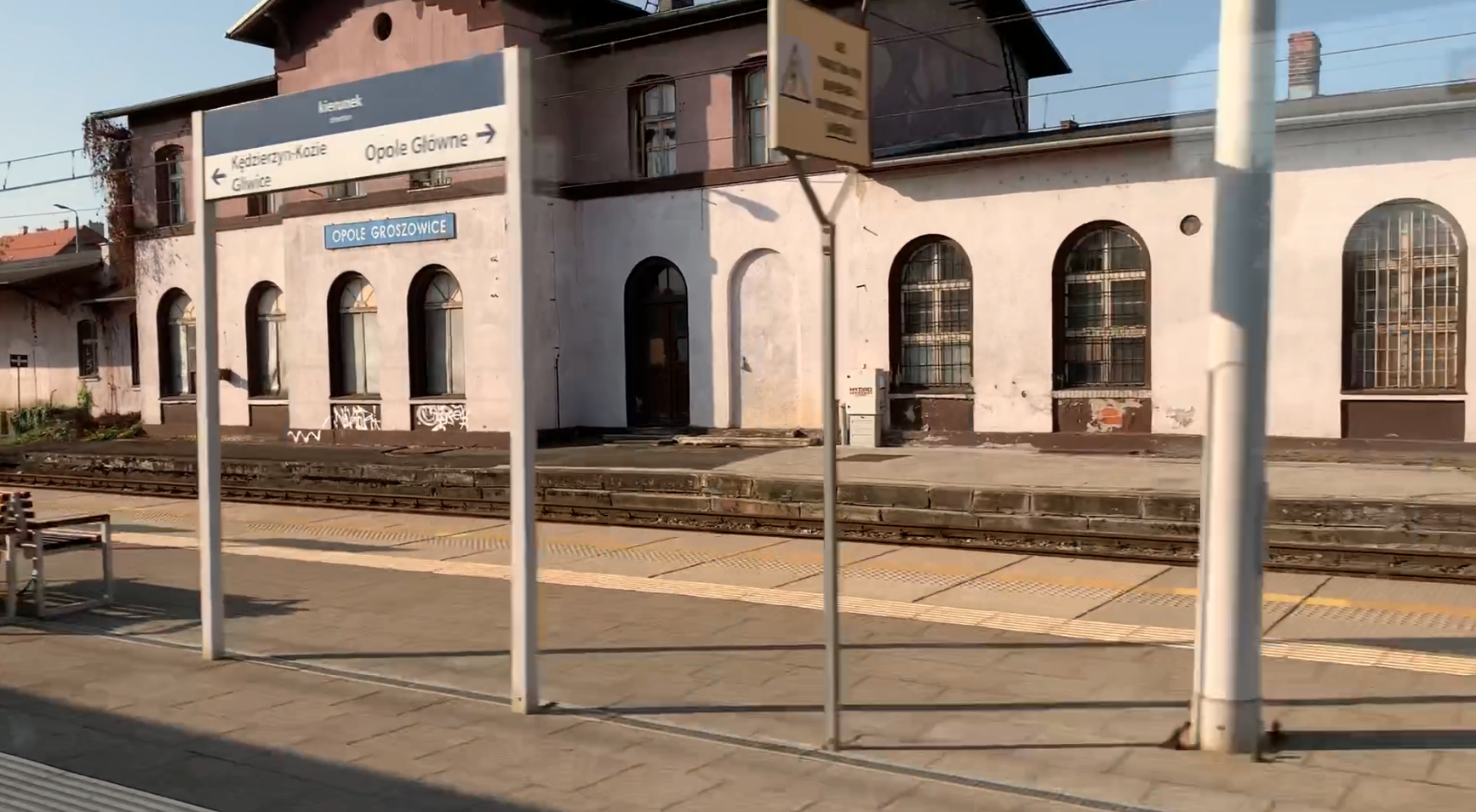
Leave a Reply
You must be logged in to post a comment.